
Fascinating cathedrals are scattered throughout the whole country, such as Toledo Cathedral, León Cathedral, and Burgos Cathedral. There are many others that hide in the shadows of these Spanish cathedrals, less known than them, but whose majesty, architecture, and beauty will take your breath away. More than one hundred cathedrals can be found in Spain, and this article compiles those that are usually left out of the rankings.
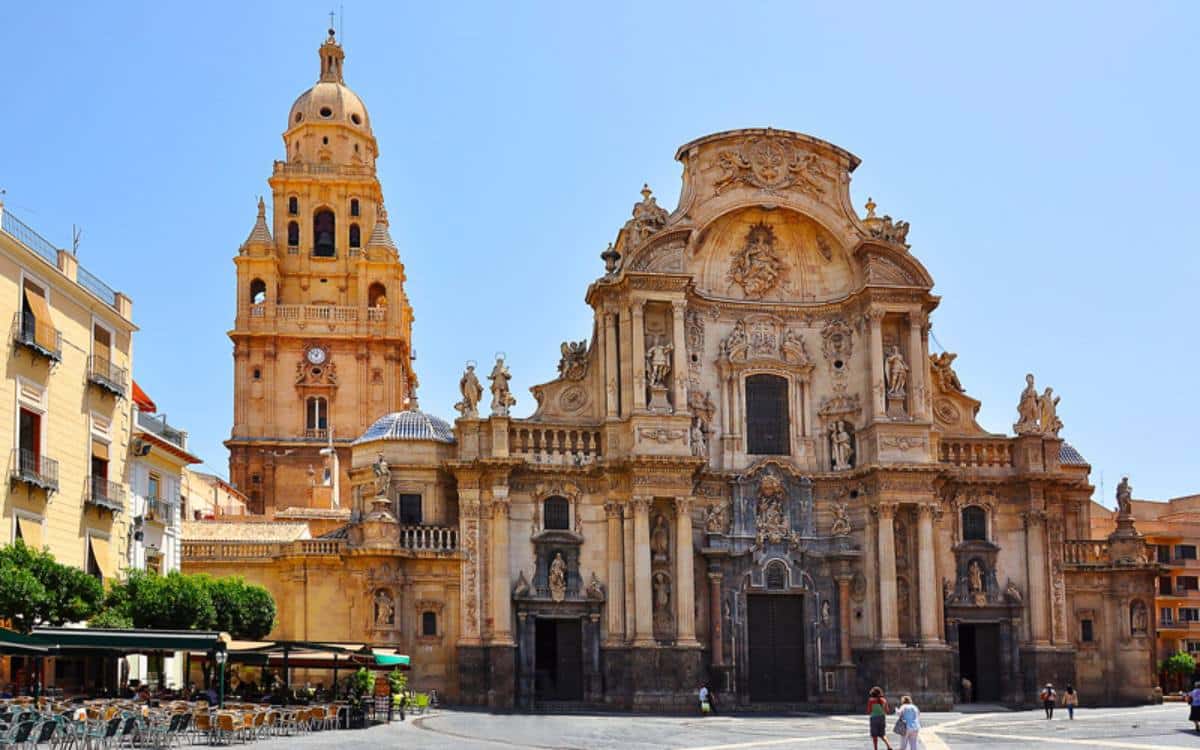
Murcia Cathedral. | Shutterstock
Let’s begin this compilation with Murcia Cathedral, whose name actually is Santa Iglesia Catedral de Santa María, and can be found in the old centre of the town of Murcia. Consecrated in 1497 with a Gothic style, it would suffer many renovations later, so it presents Baroque, Renaissance, and Neo-Classical add-ons.
The tower of this cathedral rises 93 metres from the ground, making it the third-tallest bell tower in Spain. Its bells have announced events such as the Segura River floods, wars, holidays, and festivities. It has managed the irrigation turns of Murcia’s orchard. Experts categorise its main façade as a great example of Spanish Baroque architecture. Declared a National Monument, its Main Chapel houses the sepulchre where the heart and insides of Alfonso X the Wise rest.
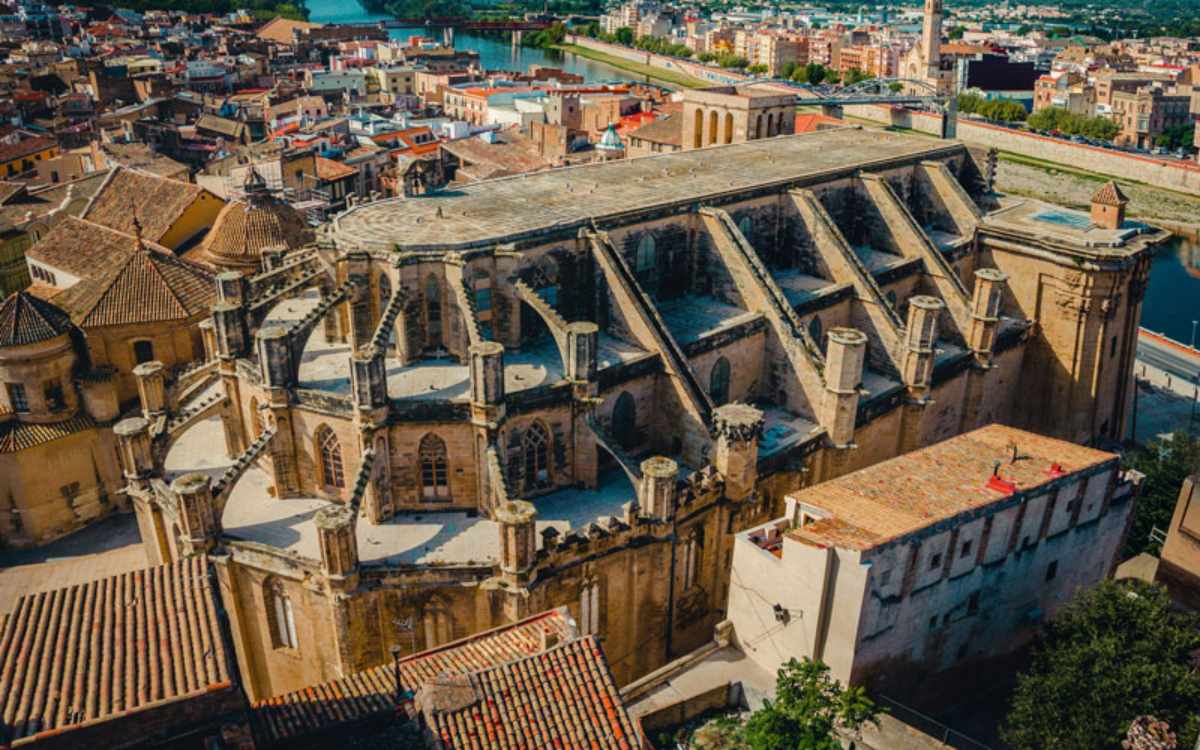
Tortosa Cathedral. | Shutterstock
In the province of Tarragona, you will find the breathtaking Santa María de Tortosa Basilica Cathedral. Built on top of a Roman building, the construction of the current temple began in 1347 in a Gothic style. The diverse construction phases kept going on until 1620, when the Baroque façade was started. Tortosa Cathedral is located in the city centre, on the Ebro River bank. Many archaeological excavations have revealed that this location used to be a Roman forum.
An air-raid shelter can be found under the beautiful thirteenth-century cloister. It was built between the years 1937 and 1938. It is possible to visit most of its interior, where plenty of liturgical objects of great value are preserved and are exhibited to the public.

Bilbao Cathedral. | Shutterstock
Bilbao Cathedral is the most majestic Gothic temple in the province of Vizcaya, in País Vasco. It was built in a Gothic style between the late 14th century and the early 16th century. However, both its bell tower and its façade were rebuilt during the 19th century, when they adopted the Neo-Gothic style. Its name comes from the patron saint of Bilbao, Santiago el Mayor, who is linked to a beachy path of the Camino de Santiago that crosses the city. It has 15 chapels that prove its large size.
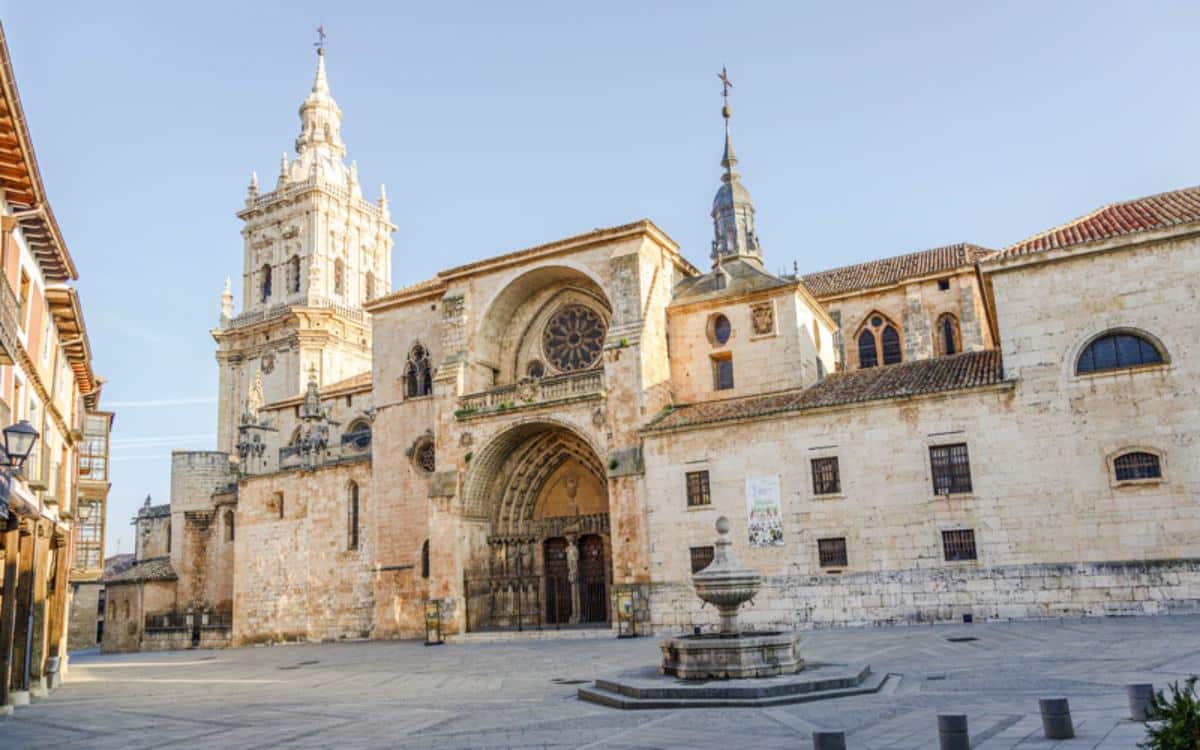
El Burgo de Osma Cathedral. | Shutterstock
Erected on an old Romanesque temple, the Gothic Catedral de la Asunción de El Burgo de Osma stands in Soria. Its construction dates to 1232, but it would later be remodelled and decorated. For instance, it got many Neo-Classical stylistic elements in the year 1784. Just like many other Spanish cathedrals built in the 13th century, this temple was devoted to Asunción de la Virgen.
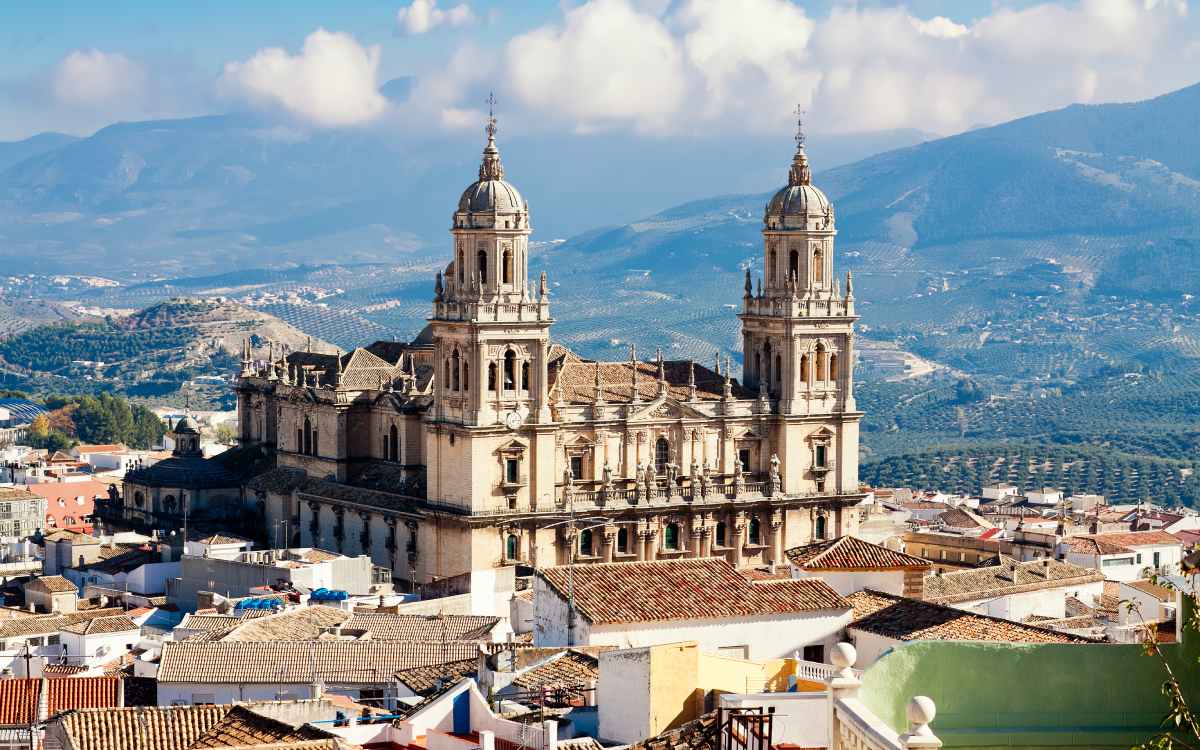
Jaén Cathedral. | Shutterstock
Santa Iglesia Catedral de la Asunción de la Virgen, popularly known as Jaén Cathedral, is located in the province of Jaén. Its works began in the 16th century in order to replace another Gothic temple from the 15th century. Although its construction lasted many centuries, the original idea was preserved. Its sacristy and its chapter hall are described by experts as one of the most representative works of the Spanish Renaissance.
Although you will find many religious objects and works of art inside this temple, the relic of “La Verónica,” or Santo Rostro, is probably the most important. It is considered Jesus’ true face. It is believed that this face was printed on the canvas used by Verónica to wipe Christ’s face during the Passion. The relic is kept in the Main Chapel.

Guadix Cathedral. | Shutterstock
It’s time to head to Guadix, in Granada, so you can discover one of these unknown Spanish cathedrals. This cathedral, the Encarnación de Guadix Cathedral, was built in a Baroque, Renaissance, and late Gothic style. Its construction began in the 16th century, a work that wouldn’t be concluded until two centuries later. Its façade is a spectacular example of Baroque art.
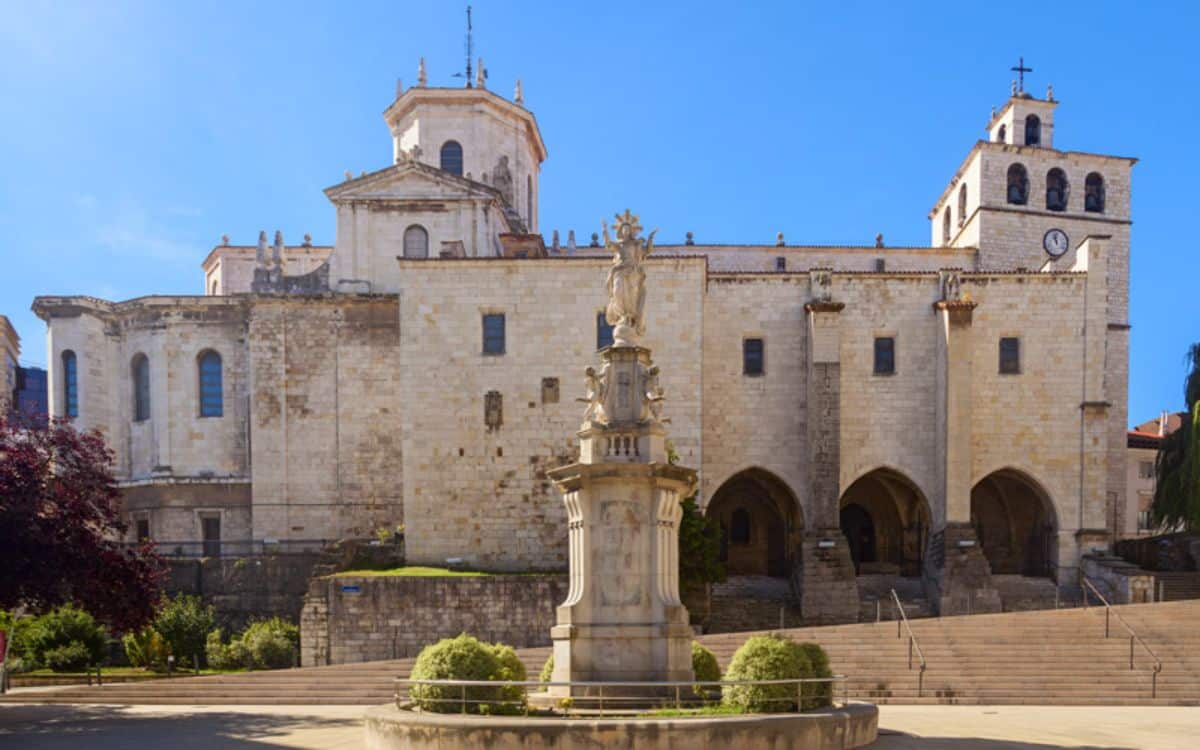
Santander Cathedral. | Shutterstock
Another unknown cathedral awaits you in Santander, the Catedral de la Asunción de Nuestra Señora. Its style is mainly Gothic, but it has been renovated and enlarged on many different occasions. The monumental complex was built between the 12th and 14th centuries on an old monastery. At first, it was intended to be an abbey and was called the Cuerpos Santos abbey. The Christ Church, known as Cripta too, lies in the bottom part of Santander Cathedral. Its decoration is mainly composed of floral motives.
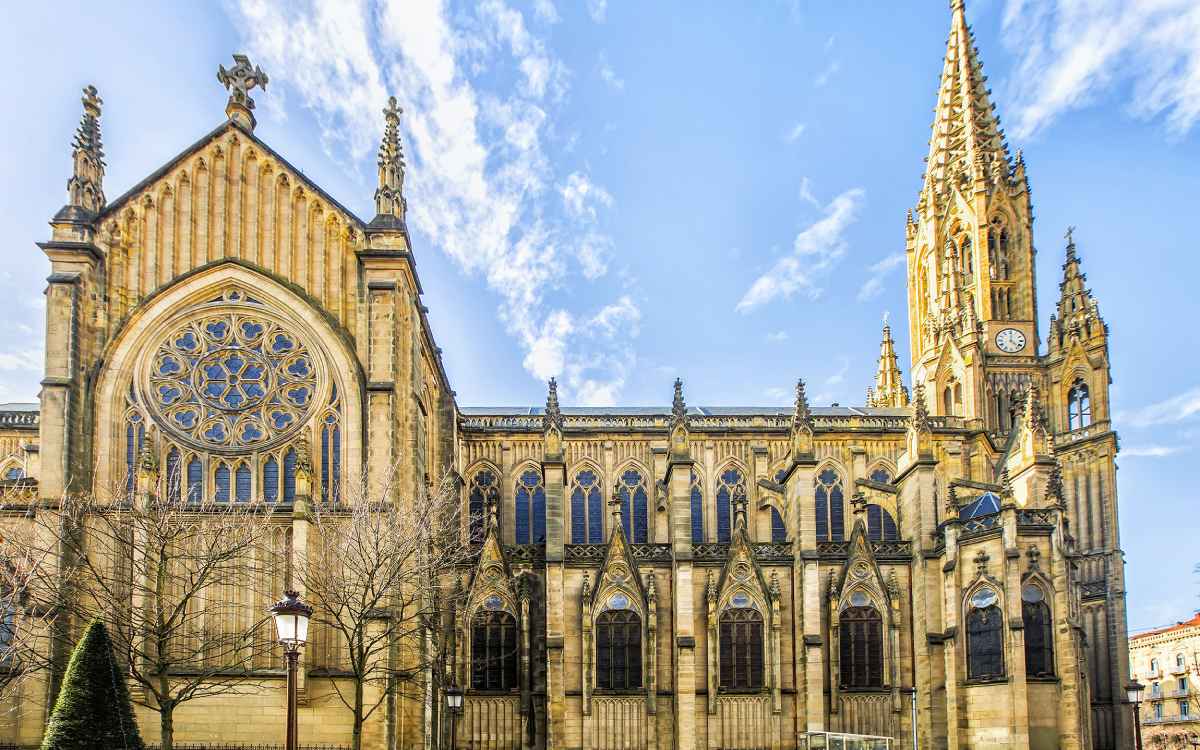
San Sebastián Cathedral. | Shutterstock
This is one of the most outstanding cathedrals on this list of unknown cathedrals in Spain. The Catedral del Buen Pastor, in San Sebastián, Guipúzcoa, is extremely tall. Its great height makes it one of the most breathtaking and interesting buildings in the city. In fact, it is the largest building in the whole province. Its historicist Neo-Gothic architectural style belongs to the period when it was built, in the last years of the 19th century. In 1953, it was granted the title of cathedral.
There are many major elements inside it, its crypt being one of them, located under the presbytery. Since the renovation that took place between 1949 and 1953, it has served as a sacristy. The remains of the first priest of this temple are kept in this crypt. Its organ is worth mentioning as well; it dates back to the year 1954. The information published during that time indicates that it was one of the largest organs in Spain and Europe.
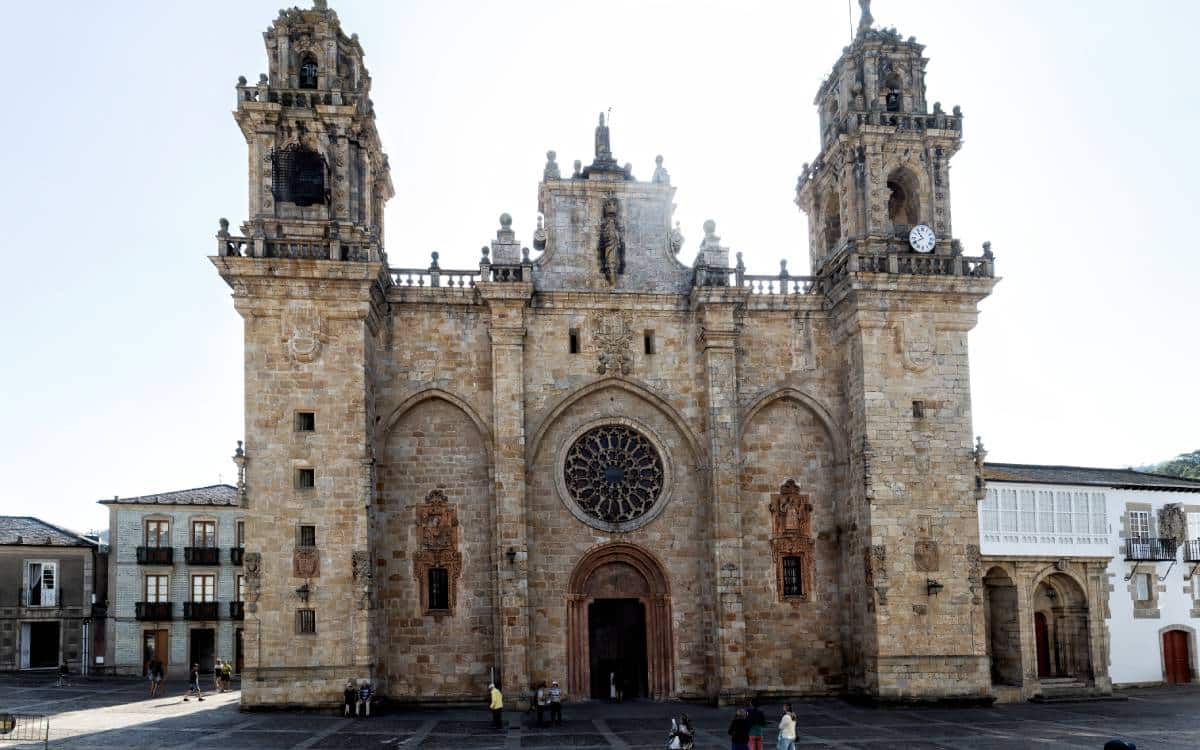
Mondoñedo Cathedral. | Shutterstock
Declared a National Monument, the Virgen de la Asunción de Mondoñedo Basilica Cathedral is also known as the “Catedral Arrodillada,” which translates to “Kneeling Cathedral.” It receives its name thanks to its perfect proportions and low height. Although this is the oldest cathedral in Spain, not many people know about this building, which was declared a basilica in March of 1959 thanks to a papal bull from Pope John XXIII. It houses one of the most important museums of religious art in Galicia, the Santos San Cristóbal Museum, built in 1969.
Many architectural styles coexist in this temple thanks to the many renovations and expansions that Mondoñedo Cathedral has experienced. It was first built on a Romanesque base, but the later amplifications added Baroque elements. Many other styles can be seen in its Romanesque main door and main apse. The sacristy has a Gothic style, as do the rose window of the western façade and the crossing. On the other hand, the cloister presents a Classical style due to a renovation that took place in the early 17th century.
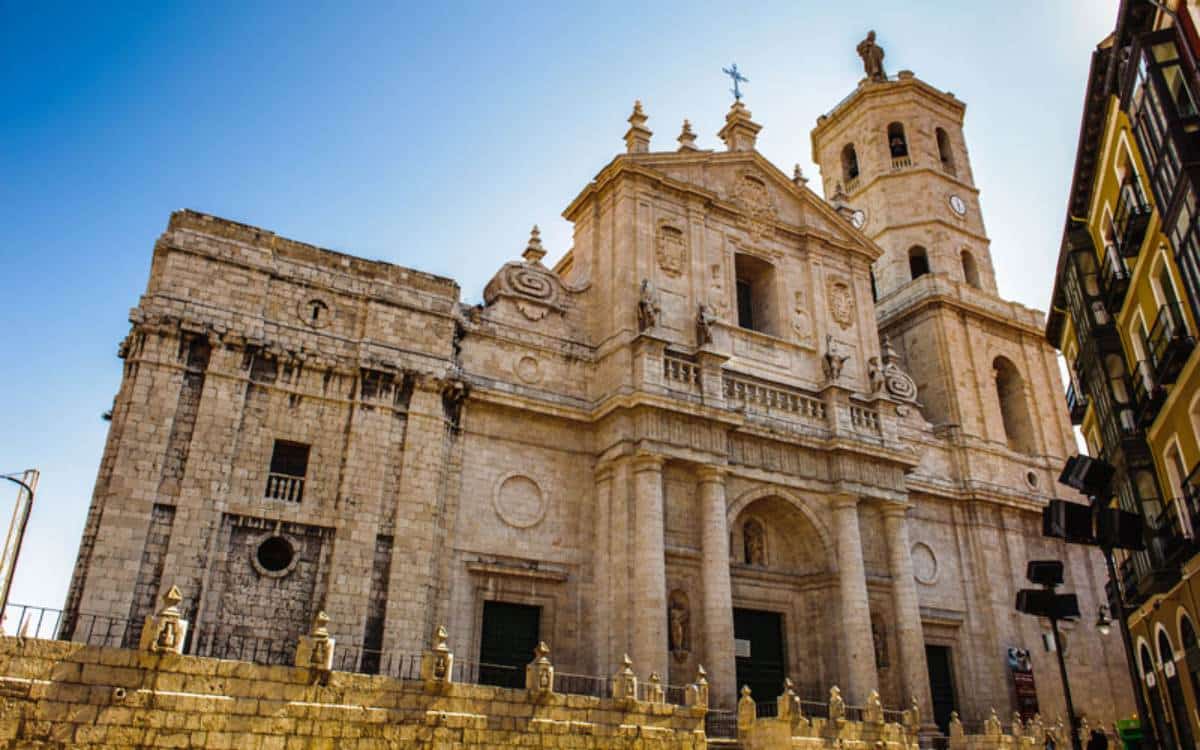
Valladolid Cathedral. | Shutterstock
The Santa Iglesia Catedral Metropolitana de Nuestra Señora de la Asunción lies in Valladolid. This incomplete temple was designed by the acclaimed architect Juan de Herrera in the 16th century. This Herrerian-style building with Baroque add-ons is only 45% of the original idea. The great magnitude of the project and the uneven area the cathedral was placed on led to unfinished construction. However, it is one of the most beautiful and unknown cathedrals in Spain. It is part of the route to the cathedrals of Castilla y León.

Albarracín Cathedral. | Shutterstock
The Catedral del Salvador de Albarracín lies in the locality that shares its name, in the province of Teruel. The temple belongs to the extremely beautiful Conjunto Histórico-Monumental de la Ciudad de Albarracín. In fact, Albarracín is actually one of the most beautiful villages in Spain. This cathedral was built on the remains of an old twelfth-century Romanesque temple. The construction began in 1572.
The temple rises strikingly in the heart of Albarracín, among its numerous houses. Its floorplan is clearly influenced by the elevation Albarracín sits on. For this reason, the temple has only a nave with chapels on its sides. The entry is one of the most particular characteristics of this cathedral. You can access it through a discreet Baroque portal. The Renaissance tower is the main outdoor feature. This is another unknown Spanish cathedral you will fall in love with.
You can also read this article in Spanish here.